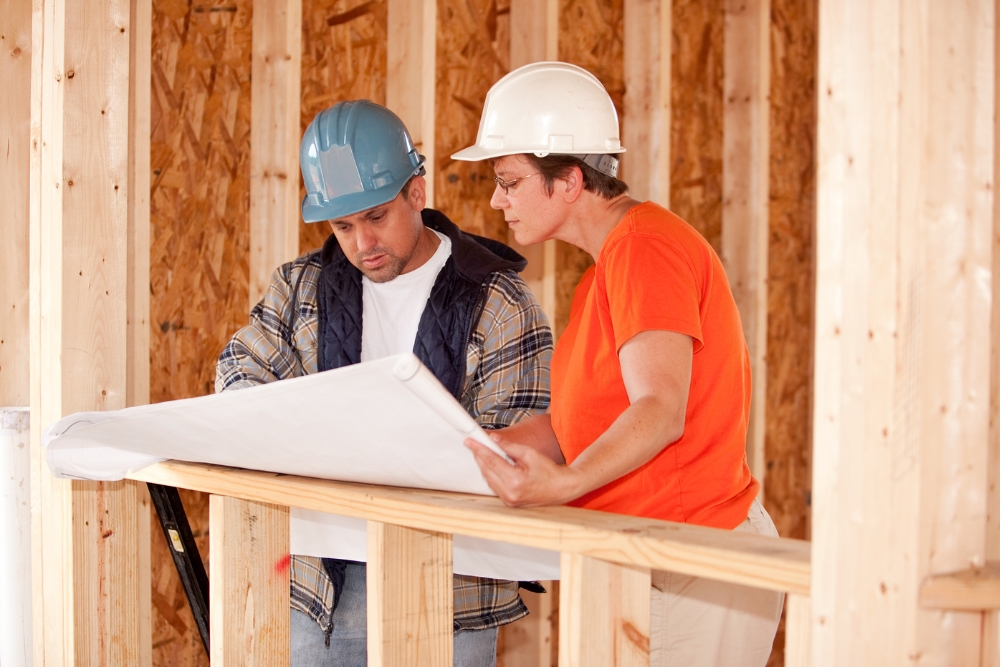For most companies, closing down during planned or necessary renovations is not an option. Not only will shutting your doors create undue financial hardships for you and your employees, but it can also cause you to lose the customer base you have carefully created.

Therefore, your best option is to renovate while your business is still open. This can create new challenges that affect the safety of your employees and customers and can be a distraction as workers attempt to do their jobs during the upheaval.
But by utilizing a blend meticulous planning, inventive thinking, and the right tools, you can maintain your company’s operations while protecting your team from the discomforts often associated with construction and renovation.
Planning for Success
As with any serious endeavor, companies that are planning renovations need to create meticulous plans to ensure the work can go as planned without disrupting the flow of daily work activities.
Conducting a renovation is a big undertaking. You cannot take a “we’ll figure it out as we go” approach to renovation if you want to do so while your staff is on the job site.
That means that you and your construction crew need to create a team that will supervise the building process. This should include the company’s critical managers or the owner, the project manager, the foreman of the construction crew, and any other affected parties.
This team should meet regularly so they can create plans and checklists and compare notes on the construction process. Discussions should center around the renovation timeline, employee and customer safety, and any updates that can affect progress, such as weather delays or supply chain issues.
When everything is organized and prepared for renovations to start, the planning team must determine any possible risks in order to create a safety strategy. In the event that workers must be close to the renovation site, they should be made aware of alternative layouts and evacuation routes, the use of protective gear, posted warning signs, and changes to foot traffic patterns.
Prioritizing the safety of your staff and clients should always come first when doing any on-site construction or renovations.
Communication Is Key
You and your team will need to constantly evolve during the renovation process, particularly if the project requires the construction crew to move to various locations within the building.
If you have created your project management team, you should be communicating regularly with the construction crew and your employees, but you may need to “over communicate” at times to ensure that everyone understands the safety protocol and timelines.
Your staff should also be aware that there will be times when the construction crew has to make loud noises during business hours. While barriers may muffle most of the noise of renovation, there are still times when heavy and loud equipment has to be used. Employees should be told ahead of time so that they can make preparations to be off video and telephone calls.
If your business does not often have customers in the building, it’s also possible that you could go digital and allow employees to work from home on days when the construction crew will be conducting demolition or using loud equipment. Communicating the process of working from home should be done well in advance of the days when it will be necessary.
It’s also possible that some bigger work could be done after regular business hours. Many contractors understand that some parts of the renovation work would be too disruptive or invasive to accomplish when employees or customers are on the premises.
By communicating with your contractor early, you can set these expectations so he can communicate to his crew that they may need to work some nights and weekends to finish the job.
In addition to constant communication, you may also need to use some inventive thinking to make it through. This can include purchasing good project management software, offering customer discounts to keep traffic coming into your business, or employing other digital tools that help you work away from the site.
Barrier Solutions
Isolating the construction site properly can make a big difference as well. In the not-so-distant past, it wasn’t uncommon to use thick sheets of plastic to separate areas of construction from the places where business was being conducted. While this wasn’t ideal, it did at least provide a small barrier between renovation and employee areas.
As concerns about safety and noise pollution grew, however, construction crews began building temporary walls out of permanent materials, such as studs and drywall, to keep employees and customers out of these areas.
But this created other problems. While it was a more sturdy solution to the plastic sheets, it meant that a lot of unnecessary construction material was being placed into our local landfill once the walls had to come down.
With the invention of reusable modular walls, protecting workers and customers from noise and debris has become easier and more environmentally sustainable. These new barriers keep renovation noise and debris hidden from day-to-day operations, can be configured to meet any size or shape, and are simply deconstructed and taken away when they are no longer needed.
Modular walls are made to fit tightly and keep construction fumes, dust, and debris away from your employees and customers. They can also be utilized to guide foot circulation. Because of their adaptability, these barriers can be equipped with locking doors or keypad entry systems, limiting access to the construction zone to just those who require it.
There are several obstacles involved in keeping your business open while construction is taking place, but with the right preparation, tools, and mindset, you can overcome them and enjoy the finished product with your team.
Patrick Kiessling is the president of containment solutions company Temporary Wall Systems.
